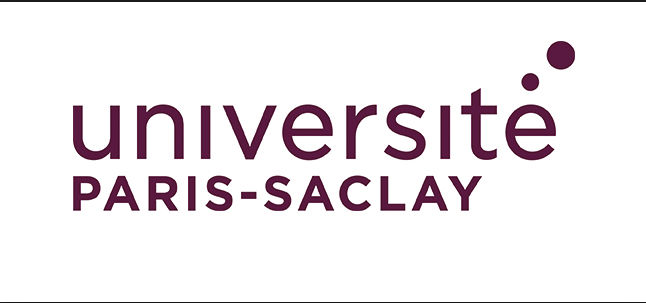|
|
|
|
|
|
Drug Highest PhasePhase 2 |
First Approval Ctry. / Loc.- |
First Approval Date- |
|
MechanismSARS-CoV-2 S protein neutralization |
|
|
|
Inactive Indication- |
Drug Highest PhasePreclinical |
First Approval Ctry. / Loc.- |
First Approval Date- |
|
|
|
|
|
Inactive Indication- |
Drug Highest PhasePreclinical |
First Approval Ctry. / Loc.- |
First Approval Date- |
/ Not yet recruitingNot Applicable Respiratory Muscles in End-stage Lung Disease:
PAthophysiological Processes & Clinical Consequences
Rationale: In patients with chronic lung diseases, the role of respiratory muscle dysfunction has been underestimated. Also, current treatment options, like chronic NIV and lung transplantation (LTx), might also have deleterious effects on the respiratory muscles, and the mechanisms are poorly understood.
Therefore in this exploratory study the objectives are to:
1. Determine in vivo respiratory muscle function and progression of respiratory muscle dys-function in end-stage COPD patients
2. Establish the correlation between changes in the structure and contractility of respiratory myofibers and in vivo respiratory muscle function.
3. Establish the effect of chronic NIV on structure and contractility of respiratory muscle fi-bers
4. Determine whether the structure and contractility of respiratory muscles cells at the time of LTx predicts clinical recovery post-LTx.
Study design: The study will be an exploratory observational cohort study following patients on the LTx waiting list during the waiting period and afterwards until they showed functional recovery of respiratory muscle function.
Study population: Adult COPD patients on the LTx waiting list will be included. Intervention (if applicable): None
Main study parameters/endpoints:
To assess clinical functioning of the respiratory muscles we will assess respiratory electrical activity as a measure of respiratory effort by surface EMG, and thickening fraction of the diaphragm and intercostal muscles and diaphragm excursions by ultrasound and maximal in- and expiratory pressure to assess muscle output; all before and after LTx. We will relate and correct these data for hyperinflation and degree of lung damage by using data from standard care lung function tests and CT scans, and will relate these measurements to prior treatment (NIV settings) and outcome after LTx, by retrieving these data from the EPD.
To assess contractility of respiratory myofibers and in vivo respiratory muscle function, biopsies will be taken during LTx surgery and the biopsies will be analyzed in the lab of Prof. Ottenheijm (AmsterdamUMC) for individual myofiber functioning (strength, calcium sensitivity, myofiber characteristics) and in the lab of Dr. Pouwels for extracellular matrix characteristics.
Nature and extent of the burden and risks associated with participation, benefit and group relatedness:
Overall, risks are believed to be minimal. The clinical measurements are non-invasive and/or regular performed in clinical practice. Also, we decided to do those measurements during regular control visits, limiting the burden for the patients. Taking biopsies from the respiratory muscles during surgery has been extensively performed without any risk; the biobank of the Ottenheijm group contains > 500 samples and never any complication has been observed. Also, in preparation of the present study we performed a pilot study in 12 COPD patients of whom.. biopsies were taken at the UMCG without side effects or complications. The biopsies will be done with the patients being under full anesthesia, so participants will feel no discomfort.
/ Not yet recruitingPhase 3IIT Prostate Cancer Diagnosis by Multiparametric Ultrasound (Clinical)
This phase III trial compares the use of contrast-enhanced multiparametric ultrasound (mp-US) to multiparametric magnetic resonance imaging (mp-MRI) for the diagnosis of clinically significant prostate cancer (PCa). A mp-US is a procedure in which a probe that sends out high-energy sound waves is inserted into the rectum. The sound waves are bounced off internal tissues or organs and make echoes. The echoes form a picture of body tissue called a sonogram. Perflutren lipid michrosphere (Definity) is a contrast agent that uses microbubbles to enhance ultrasound images of the prostate. Doctors hope to learn if the Definity-enhanced mp-US imaging technique can accurately direct targeted biopsy for the detection of clinically significant prostate cancer when compared to standard of care mp-MRI.
/ Not yet recruitingPhase 2/3IIT Neoadjuvant Gemcitabine and Cisplatin in Combination With Perioperative Pembrolizumab Versus Upfront Surgery for Patients With Primary Resectable and Borderline Resectable Perihilar and Distal Cholangiocarcinoma (NEODISCO): A Multicentre Phase 2B/3 Randomized Controlled Trial
Extrahepatic cholangiocarcinoma (eCCA) is a rare and aggressive cancer with poor prognosis. ECCA can be further subcategorised in perihilar and distal cholangiocarcinoma (pCCA and dCCA). Surgical resection is the only potential cure, but only one-third of patients are eligible. Even among those deemed resectable, a significant portion (≈30%) experience disease progression before surgery, while another 30% are found unresectable during exploration. High recurrence rates and postoperative complications further limit survival, with 5-year overall survival ranging from 13% (R1 resection) to 40% (R0 resection). Given the long preoperative work-up period and lack of treatment during this phase, a neoadjuvant approach may improve outcomes by increasing R0 resections, reducing recurrence, and optimizing patient selection.
This multicenter, randomized phase 2B/3 trial aims to assess whether neoadjuvant gemcitabine and cisplatin plus perioperative pembrolizumab improves event-free survival in patients with resectable and borderline resectable pCCA and dCCA.
100 Clinical Results associated with Stichting Onderzoek Cancer Center Amsterdam
0 Patents (Medical) associated with Stichting Onderzoek Cancer Center Amsterdam
100 Deals associated with Stichting Onderzoek Cancer Center Amsterdam
100 Translational Medicine associated with Stichting Onderzoek Cancer Center Amsterdam











